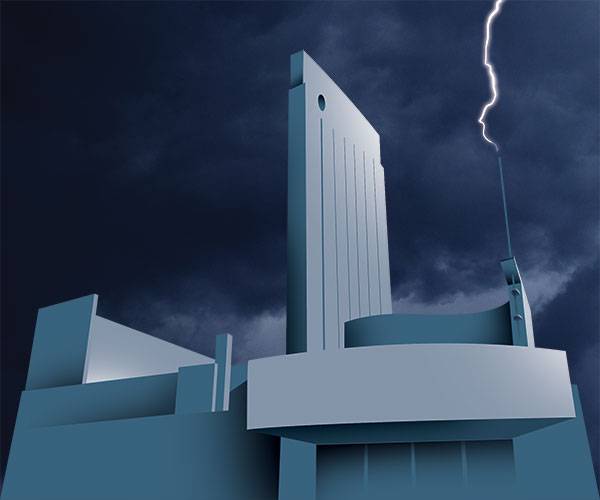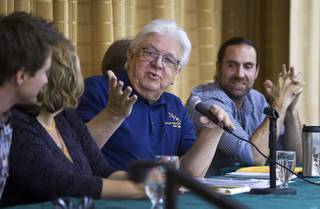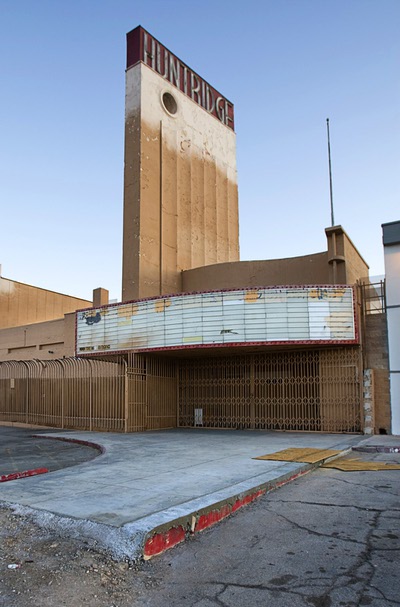Friday, June 21, 2013 | 2 a.m.
Some surprising information came out during a meeting Thursday night of some 150 people gathered in a downtown hall to ask questions about plans to buy and revive the historic Huntridge Theater.
The Huntridge is a 69-year-old building at the corner of Maryland Parkway and Charleston Boulevard that has drawn the interest of three partners who want to save the building from the wrecking ball.
A state covenant preventing demolition of the building runs out in 2017.
Or does it?
Praising the project’s intention, Bob Stoldal, a local historian/TV news executive and one of five panelists, pointed to an agreement made between previous owners of the Huntridge and the state of Nevada in 1997.
The agreement grants Friends of the Huntridge Theater Inc. some $765,000 from the Nevada Commission for Cultural Affairs, but dictates that the owners have to “assume the cost” to keep the building in good shape “so as to preserve the architectural, historical, cultural and/or archeological integrity” of the building.
Currently, the exterior of the building is nothing less than an eyesore to most people, as its paint is peeled or non-existent and its marquee cracked. Though structurally sound, Michael Cornthwaite, one of the three who formed Huntridge Revival LLC to save the building, said inside plumbing fixtures and electrical wiring is torn out, none of the bathrooms work, and pigeon droppings litter the place.
Stoldal termed the current condition “sh--,” and added that “you have to squint and think about what it could be.”
Other restraints are spelled out including that the building has to “be open to the public no less than 12 days a year.” The Huntridge hasn’t been open in almost a decade.
The penalty for not fulfilling the bargain, the agreement states, is that the state “shall have the right to file suit … to cause the applicant to cure said violations or to obtain the return of funds.”
Though Stoldal said that it appears terms of the covenant might have been broken, he wasn’t sure how that information might help, or potentially hurt, the move to save the building.
He also wondered if the 1997 covenant with Friends of the Huntridge holds true for the Mizrachi family, which purchased it later.
Meanwhile, Huntridge Revival LLC, whose partners are Cornthwaite, Joey Vanas and Rehan Choudry, have made an agreement with the Mizrachi’s to buy the building for $4 million by the end of the year. To reach that point, they are first seeking $125,000 from public contributors through a fundraising method called crowdsourcing.
Crowdsourcing uses the Internet to allow people to make contributions for a potential project, with various guidelines, such as time constraints, set out beforehand.
Huntridge Revival LLC needs to collect $50,000 by the end of their indiegogo campaign in mid-July. That way, they can make their next scheduled payment to the Mizrachi’s in August. As of Thursday night, the Save the Huntridge crowdsourcing plan on indiegogo.com had raised more than $28,000.
The audience applauded when emcee Brian Alvarez told them how much had been raised so far.
Longtime downtown resident Ginger Bruner later asked why Huntridge Revival never formed a nonprofit organization, adding that perhaps that would get people “off their backs.” On various websites, some people have made it clear they don’t like the idea of contributing money to a for-profit organization.
To answer, Stoldal took the microphone. From his experience sitting as a current member of the Nevada Commission for Cultural Affairs, and knowing how much documentation that group requires before issuing grants, he figured the amount of time, expense and energy needed to obtain nonprofit status would be enormous.
“The reality is, these days when we’re asked for money, we require paperwork that thick,” he said,” holding his index finger and thumb about 3 inches apart.
Cornthwaite ran through a list of potential funding options, from government grants to private investment, that will be pursued once they get through this initial phase.
Then someone in the audience said they work on EB-5 funding — a federal program that grants green cards to foreigners who invest in some projects in the United States — and that might be considered.
Another person wondered if the Huntridge would be a live performance venue, to which he was answered “yes.” Others wondered about the different kind of programming and what might the property hold.
Cornthwaite said it would be a shame if they went through all this, renovated the building, then only opened it a few days a week.
“There’s going to be a lot of days and hours to program there,” he said. “The worst would be to rebuild it, then turn it on Friday and Saturday and keep it empty the rest of the week.”




Join the Discussion:
Check this out for a full explanation of our conversion to the LiveFyre commenting system and instructions on how to sign up for an account.
Full comments policy